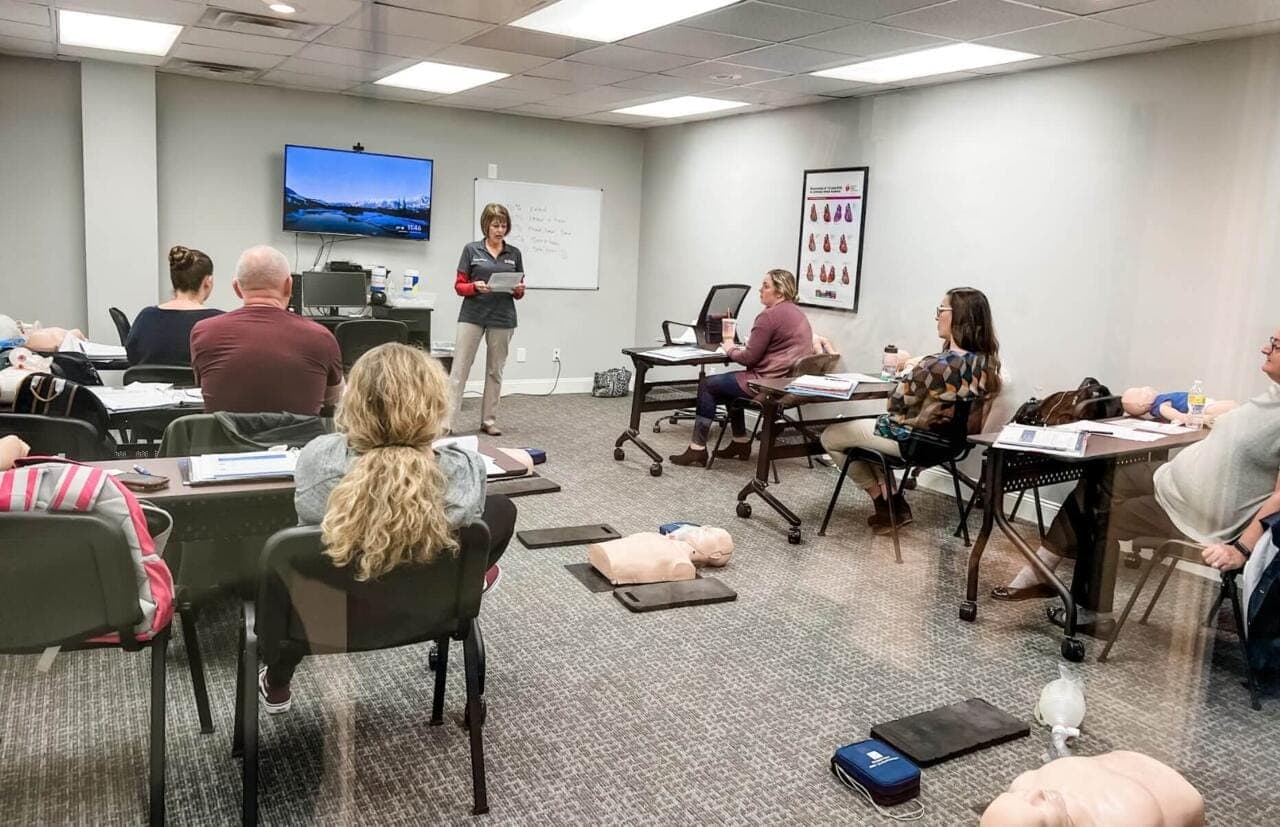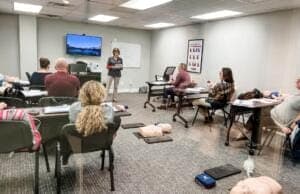CPR Instructor Certification vs. Normal CPR Certification

Do you remember the idea that if you completed third grade, that you should be able to teach third grade? Obviously, there’s some basic logic there but that’s not how things work. It’s one thing to know content but another to know how to teach it. Likewise, CPR Instructors have to take additional training beyond basic CPR certification. We will discuss what the difference between those who are trained in CPR and those who are trained to teach CPR.
What is a CPR Trainer?
A CPR trainer is a very important resource for not only the healthcare industry but for many industries that are required to maintain several CPR certified employees. CPR trainers are accredited by an organization such as the American Heart Association (AHA) or the American Red Cross (ARC) to teach others the lifesaving skills taught in CPR training. CPR trainers are often brought in by different companies or organizations to train their employees in small groups.
What’s involved to become a CPR trainer?

CPR instructors should be people that are able to manage a classroom, speak in front of others, and be comfortable working with a diverse group of clientele. These skills are vital to impart CPR skills to your students. To become a CPR instructor you will need to first obtain CPR certification and then sign up for a CPR course. Read this Simple Guide to become a BLS Instructor to learn the whole process.
Many people assume that CPR instructors have to have backgrounds in the medical field. However, a medical background is not required to be an AHA CPR trainer. Although it may be helpful and make it easier to understand the course content there is no required experience or qualifications to become a CPR instructor apart from meeting the course prerequisites discussed above.
Do CPR trainers need CPR certification?
According to the American Heart Association, CPR trainers do not need to have an additional certification for CPR once they have become instructors. The AHA recognizes a CPR instructor card in the place of a CPR certification card. However, many workplaces require instructors to also receive certification. It’s a little silly, but just a matter of red tape and an easy thing for an instructor to get. CPR instructors can request a CPR certification card from their instructor trainer that would have a date to match the last date they were observed teaching a class.
An old school approach to CPR instructors getting CPR certification is to have them take a CPR course with someone else. While this is not necessary or a requirement of the AHA or the American Red Cross, there is definitely no harm in this practice. It is always good for teachers of any topic to occasionally attend classes taught by others to help them become a better educator as well. If your company requires this approach, make the best of it!
Every two years, CPR trainers are required to be monitored teaching a CPR class and taking an exam. At this time, if they need it, they can also get an updated CPR certification card.
How much does it cost to get CPR Trainer certification?
Most CPR Instructor courses cost around $500-$1,000 by the time you include the required precourse, manuals, and class cost. While this may seem high, there aren’t many programs you can complete in 5-7 hours with an average salary of $50k per year.
CPR Instructor course prices vary depending on the location and Training Center you go through. Costs you can expect include:
- Initial Provider Course: $75-$150
- Instructor Essentials online course: $35
- Instructor hands-on/classroom course: $250-$600 (varies by location)
- Monitoring: $0-$150 (Some Training Centers may include this in the classroom course cost)
After the course you will still need to rent or buy equipment to teach classes and purchase the certification cards for those you teach.
How & Where can I find a CPR Instructor course?
You will need to find an authorized AHA Training Center offering instructor classes. They will have you fill out an Instructor Candidate Application before enrolling in an AHA Instructor class. The Class Eagle Heath and Safety Directory can help you find an instructor and class times. At the end of the course you will be required to take a 25 question written exam which requires an 84% or higher to pass. Remediation is available.
After the class and test you will need to be observed by an instructor or other AHA Training Center faculty teaching to prove you can properly demonstrate strategies and lessons learned in the instructor’s course. It is recommended, but not required, to teach a class within the first six months of completing the instructors course so skills you learned will be fresh on your mind.
Learn more about the American Heart Association and AHA alignment by watching this video:


